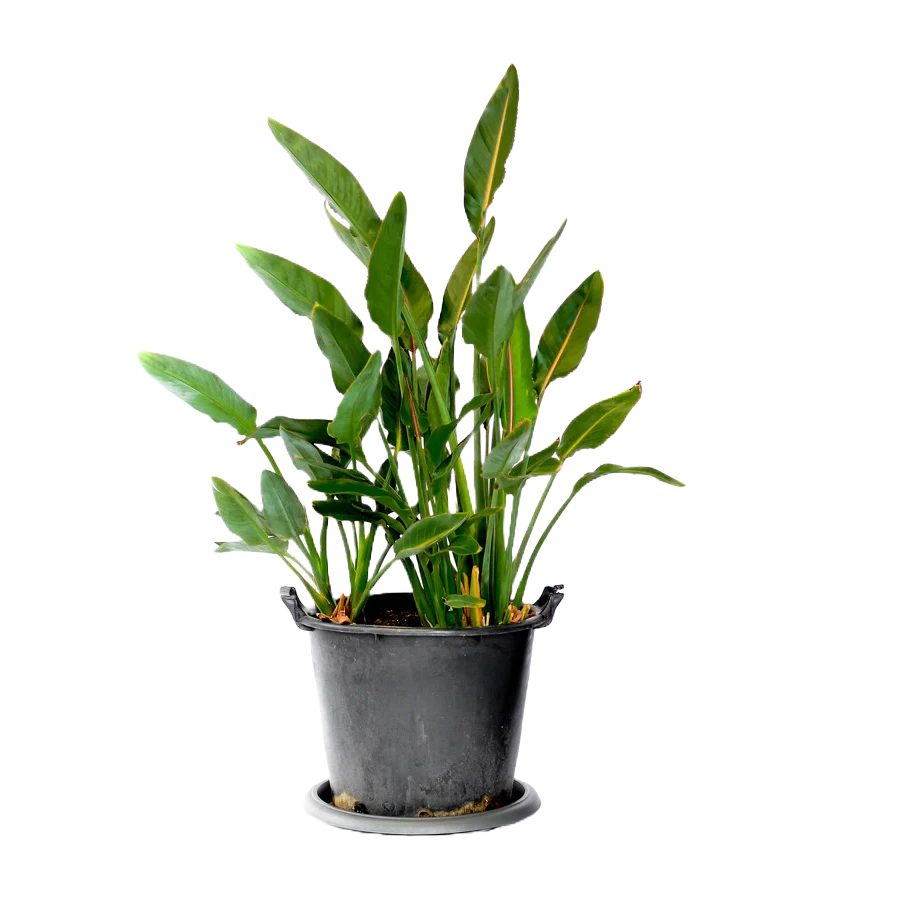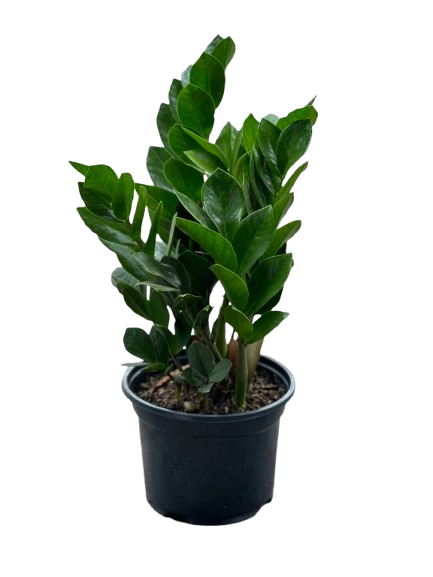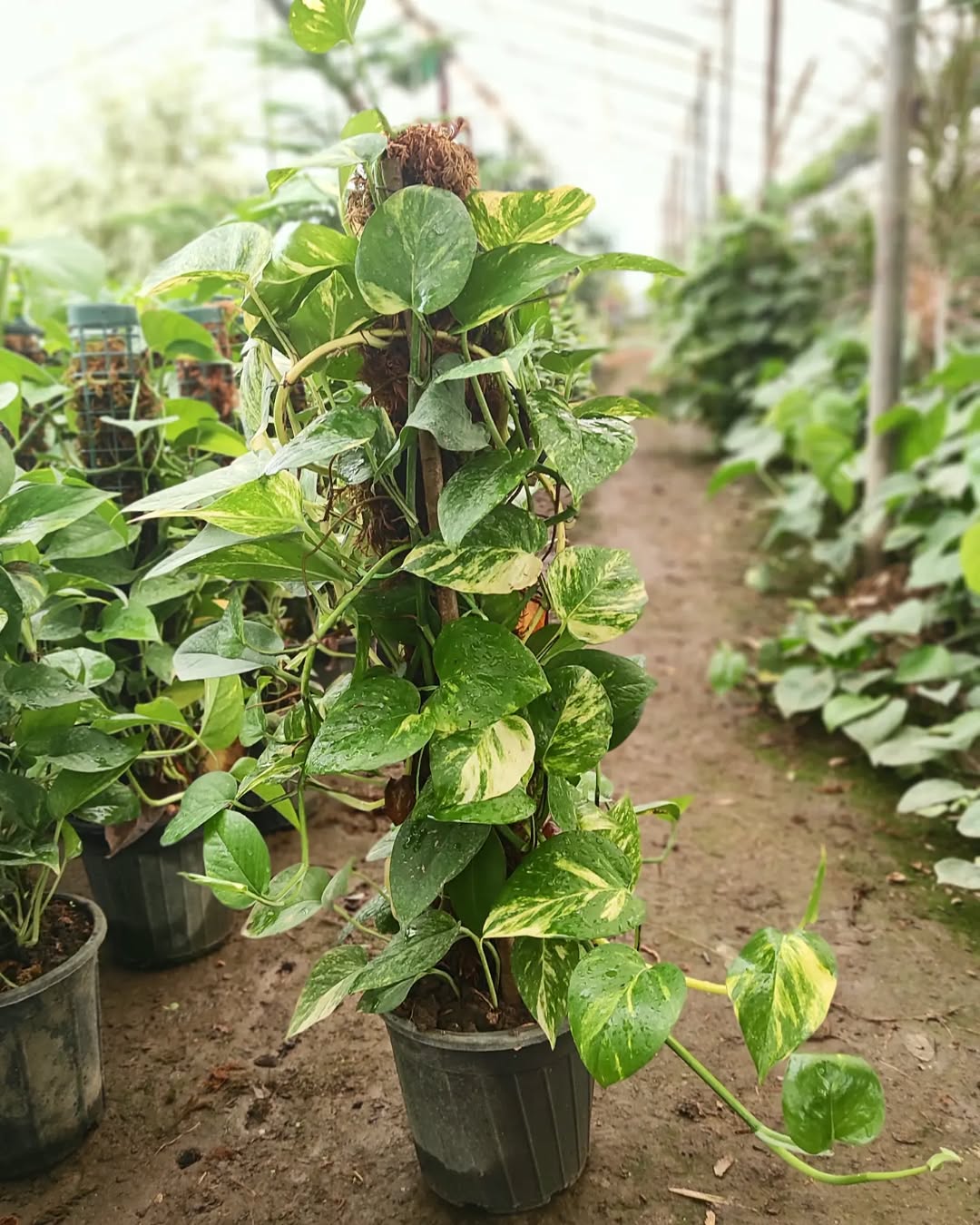The Money Plant (Epipremnum aureum), also known as Pothos or Devil’s Ivy, is one of the most popular indoor plants in Kenya. With its heart-shaped green or variegated leaves and trailing vines, it brings beauty and symbolism into Kenyan homes and offices. Loved for its low maintenance, fast growth, and air-purifying qualities, the Money Plant is perfect for plant beginners and anyone looking to add a touch of nature indoors.
Why Grow This Plant?
- Symbolizes wealth, luck, and prosperity in many cultures.
- Extremely easy to grow — tolerates low light and infrequent watering.
- One of the best indoor plants for improving air quality.
- Fast-growing and perfect for hanging baskets or shelves.
- Ideal for home and office spaces across Kenya.
Cultural & Historical Significance
Native to Southeast Asia, the Money Plant has long been considered a lucky charm. In Feng Shui, it’s believed to bring financial success and positive energy when placed in the southeast corner of a room. In Kenyan homes and businesses, it’s often grown near entryways or work desks to attract abundance and peace. The plant’s trailing vines also symbolize growth and connection.
Ideal Growing Conditions in Kenya
- Sunlight: Thrives in bright, indirect light; tolerates low light too.
- Temperature: Ideal range is 18°C to 30°C — suitable for most Kenyan indoor environments.
- Soil: Well-draining loamy or compost-rich soil.
- Watering: Water when the top inch of soil feels dry; avoid overwatering.
- Best regions: Nairobi, Kisumu, Mombasa, Nakuru, and other urban and peri-urban areas.
How to Plant It
- Select a pot with drainage holes or a hanging basket.
- Use well-draining soil with added compost or coco peat for moisture retention.
- Remove the Money Plant gently from the nursery container and untangle roots if needed.
- Plant it in the pot and fill in around the roots with fresh soil.
- Water lightly and place in a bright area with indirect sunlight.
Care Tips
- Water once a week or when soil is dry — avoid soggy soil.
- Wipe leaves regularly to keep them clean and shiny.
- Fertilize monthly with a diluted indoor plant fertilizer during the growing season.
- Trim long vines to shape the plant and encourage bushier growth.
- Propagate easily from cuttings placed in water or soil.
Pests & Diseases
- Mealybugs & spider mites: Look for white patches or webs on leaves; treat with neem oil or insecticidal soap.
- Yellow leaves: Usually a sign of overwatering or poor drainage.
- Root rot: Prevent by letting soil dry before watering and using pots with drainage.
Pet Safety
The Money Plant is mildly toxic to cats and dogs. If chewed or ingested, it may cause irritation or vomiting, so it’s best placed out of reach of pets in Kenyan households.
Growing in Containers
Money Plants thrive in all types of containers — hanging baskets, ceramic pots, or plastic planters. They’re excellent for balconies, bookshelves, or kitchen corners. Use containers with drainage holes and rotate them occasionally to maintain even light exposure and growth.
Where to Buy This Plant in Kenya
Looking for a healthy Money Plant? Visit https://planters.co.ke to explore a wide range of indoor plants and decorative pots. They offer fast delivery across Kenya and expert support for your plant journey.
Final Thoughts
The Money Plant is the perfect combination of beauty, symbolism, and simplicity. Whether you’re hoping to bring prosperity into your home or just want an elegant indoor plant that’s easy to grow, the Money Plant is a top choice for Kenyan plant lovers. Add it to your collection and watch your green corner flourish.
Recent Posts
- Asiatic Lily Bulbs in Kenya: Vibrant Color, Easy Growth & Garden Beauty
- Dendrobium Orchids: Elegant Blooms, Easy Care & Indoor Beauty
- Vanda Orchids: Vibrant Colors, Air-Grown Beauty & Elegant Displays
- Vriesea Bromeliads in Kenya: Elegant, Colorful & Easy to Grow
- Manuka : Beauty, Healing & Natural Resilience







